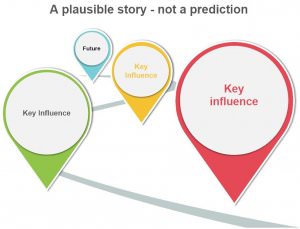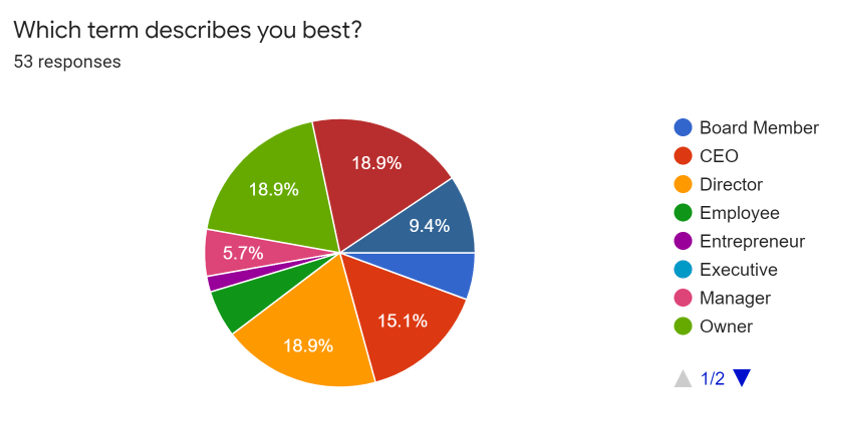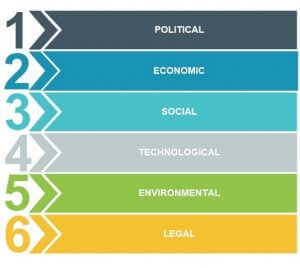
Scenario learning to make sense of the new SME business environment in NZ, post COVID-19
‘Uncertainty’ is the much-overused descriptor for the current business climate. We, humans, do everything in our power to avoid it because we dislike the feeling of not being in control. We get frustrated when the goalposts keep moving!
As business owners and professionals, we know the risks attached to the ecosystems in which we operate. We have contingency plans in place to mitigate risk, we analyse the variables and base our decisions on worse and best-case scenarios. So, what happens when our usual scenarios change following a huge disruptor like a pandemic? How do we gain an understanding of the new scenario in which we find ourselves, and how can we do this quickly and nimbly giving us time to respond and change?
 The power of many collaborators
The power of many collaborators
One approach is to harness the power of many. through collaborative working.
In June 2020, with uncertainty levels at an all-time high, we applied Scenario Learning. It’s an interactive research tool that shifts away from standard economic ‘prediction’ based models, in favour of building plausible scenarios with a collaborative group of concerned and well-informed participants.
We were able to coordinate the NZ-based online research by working closely with Tim Willard, of Navigate Scenarios in Cape Town, for advice on the process. Tim encouraged the use of a WhatsApp group as the main conduit – an inspired insight. It proved an invaluable channel for sharing links to various online qualitative data capture tools, video tutorials, graphics and of course the final report.
“This has been a remarkable journey of collaboration and learning, with a high-quality result that will provide guidance to business, community and political leaders, everyone who is concerned with what the post-COVID-19 future in New Zealand will look like. We will watch for the flags that our scenarios have highlighted, over the next 18 months, and use them to plan and prepare.” Craig Hattle (former Advantage Business Partner)
The process
Forming a panel
First, Advantage Business advisors invited panel members from their networks to join the WhatsApp group. The group was made up of CEOs, business owners, directors, and professionals. They were asked, ‘What will it be like for NZ SME business in December 2021?‘ In total 85 panellists contributed 750 different external influences they believed are going to be important to SME business out to Dec 2021.
 Gathering the data
Gathering the data
 These influences were based on the PESTEL framework. Panellists analysed political, economic, social, technological, environmental, and legal influences they felt would impact on the business environment over the next 18 months.
These influences were based on the PESTEL framework. Panellists analysed political, economic, social, technological, environmental, and legal influences they felt would impact on the business environment over the next 18 months.
The participants were then also asked which of these influences would impact their operations and their decision-making THE MOST and be MOST LIKELY TO OCCUR, between June 2020 and the target future date in December 2021.
Then the real fun began as the researchers aggregated the data into themes and mega-themes. These were clearly repeated by many of the participants.
This process of aggregation provides a very high validity of the results. It’s a form of grounded interactive research. In other words, real concerns about real, practical potential outcomes are captured and written down.
The resulting stories had meaning and connection for the participants. Accordingly, they are easy to relate to and understand by other business professionals in similar situations.
Analysis
29 of those panel members then went on to analyse the ranked importance of each influence. These were de-duplicated and grouped to become the basis of the 12 ‘flags’. We will need to watch out for what these flags indicate over the next 18 months.
Interpretation
Four clear endpoints for how NZ businesses could look by December 2021 emerged as plausible. A group of 10 “story-writer” panellists finally enriched the four scenarios for publication.
We will watch for the indicator flags over time to determine which ones play out.
Most importantly, the panel has identified a set of plausible conditions that could assist NZ business recovery following the pandemic of 2020.
Scenario learning outcomes
Major influences
The panel expects two major influences:
-
- How connected and integrated NZ will find itself compared to the rest of the world and the impact of continuing to battle COVID-19.
- The spread of economic confidence felt by businesses and consumers.
Ongoing negative or positive media narratives will impact this. It will be guided by a perception of how successful the fiscal stimulus has been. How fair we perceive it to be and the conditions of general social well-being in our communities.
To get utility from this work, it is vital that we monitor the flags every month, so that we can respond and plan. Scenario learning is not an attempt to be perfectly right. The scenarios are not predictions but they will almost never be wrong.
Four possible scenarios
The pathway to Whakaoranga (the recovery) seems clear but is still uncertain. Consequently, three other less favourable scenarios could equally come about.
We have called these:

